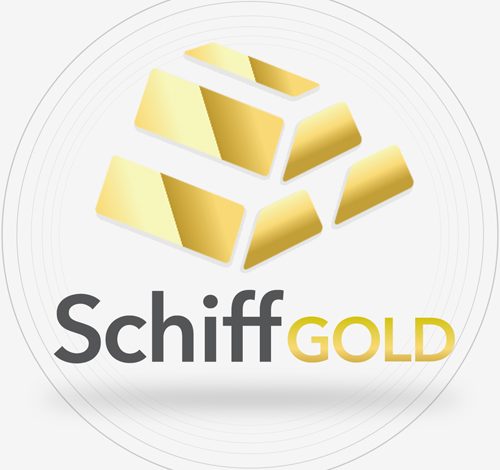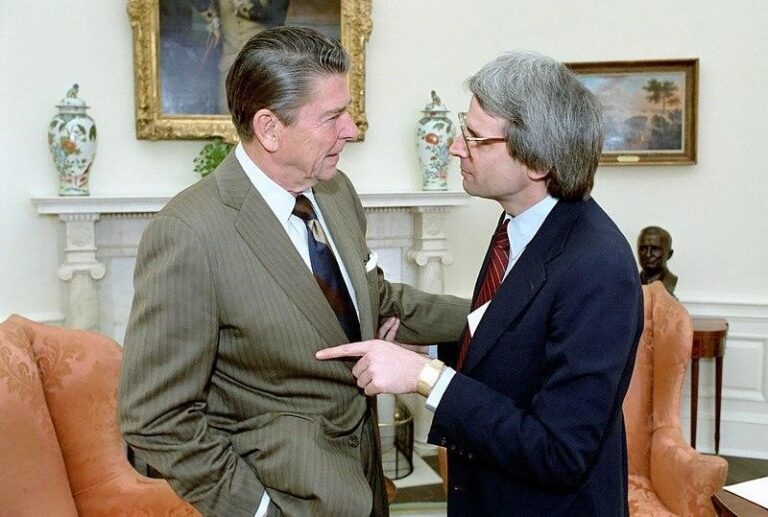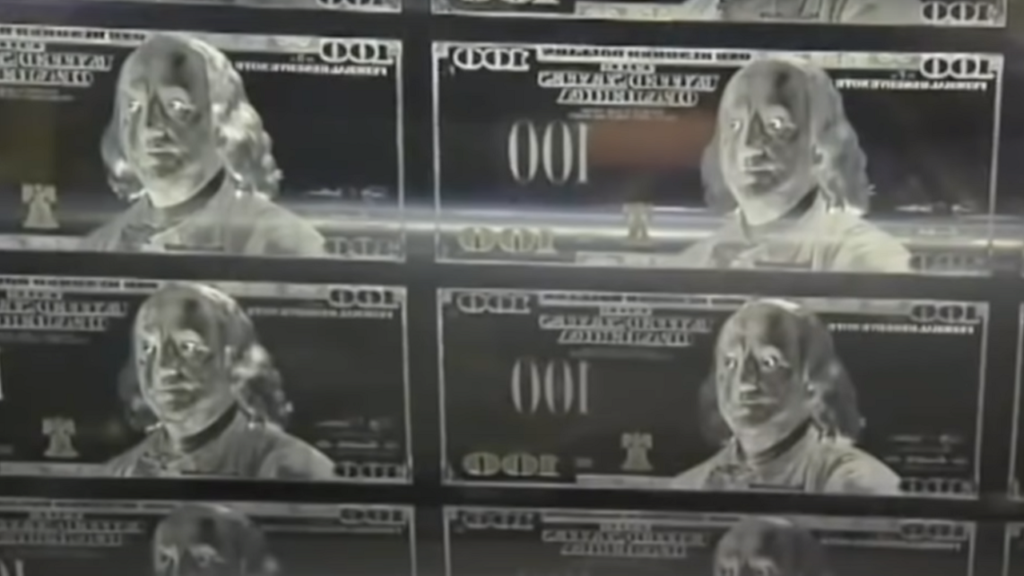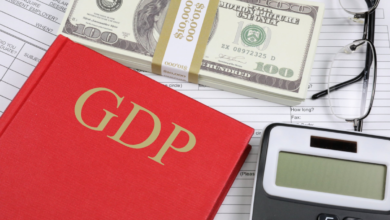Federal Reserve Debt Monetization: Financial Fraud on a Biblical Scale

Not too long ago, the national debt pushed above $30 trillion. Today, Uncle Sam is $30.26 trillion in the red. And he’s on the fast track toward $31 trillion.
Today, most people don’t bat an eye at the national debt. But that wasn’t always the case. As David Stockman pointed out there was a great deal of concern about the national debt when he was President Ronald Regan’s Director of the Office of Management and Budget.
In this photo, you see a young Stockman thumping Reagan in the chest.

As Stockman tells it, this conversation was about the surging $846 billion national debt. Within a matter of weeks, Congress would need to raise the debt ceiling to $1 trillion!
My, how things have changed.
Just 41 years later and the national debt is 36-fold larger than it was then.
Ironically, people were more concerned about a $1 trillion debt then than they are about a $30 trillion debt today. As Stockman put it, “At the time of the above photo, no one — and we do mean no one — in Washington or Wall Street thought that the public debt could be let run wild with impunity. That’s because there were always unpleasant, near- and mid-term consequences.”
At the time, the markets imposed some level of discipline on Uncle Sam. If he dove too deeply into the bond market to finance big deficits, interest rates would spike. Government borrowing “crowded out” private borrowing. As Stockman described it, “It was an honest, albeit destructive form of financing the public debt, and nobody mistook it for a free lunch.”
Enter the Federal Reserve.
Today, the government can count on the Fed to rush in and prop up the bond market. That’s what quantitative easing is all about. In effect, the Fed puts its big fat thumb on the bond market through its purchase of Treasuries. This creates artificial demand and holds interest rates artificially low. Whatever discipline the markets were able to impose on federal borrowing and spending in the 1980s is gone.
Prior to the 1970s, the Federal Reserve balance sheet stood at about 5% of the public debt, only rising above that level during wars. By the early 2000s, it had moved to 10% thanks to Alan Greenspan’s early foray into money printing. Today, the Fed balance sheet stands at 26% of the national debt.

This is purely a function of Fed debt monetization.
Jerome Powell recently claimed the Fed wasn’t monetizing the debt. It was the same lie Ben Bernanke told when he launched QE in 2008. He claimed the Fed wasn’t monetizing the debt because the central bank has no intention of holding on to it. But it’s clear that simply isn’t true. The fact that the balance sheet now represents 26% of the national debt exposes that lie.
All we have to do is look at the trajectory of the balance sheet after Bernanke told the same whopper in 2008.
The Fed pumped the balance sheet to $4.5 trillion after the financial crisis. When the Fed finally got around the shrinking the balance sheet in 2018, the markets threw a fit and the central bank went right back to QE. It got the balance sheet down to $3.8 trillion and gave up. Most of the Treasuries the Fed bought in the first rounds of QE remain on the balance sheet today — plus trillions more.
As Peter Schiff put it in a podcast, the road to hell is paved with good intentions.
Who cares about what you intend to do? What matters is what you actually do. And clearly, the road to debt monetization is paved with good intentions because that’s what the Fed is doing. It doesn’t matter if they intend to shrink the balance sheet. What matters is it’s not shrinking. It continues to grow. And even if they start shrinking it like they did when it was four-and-a-half trillion and they shrunk it down to about three-and-a-half trillion, what difference does that make if now we’re at nine trillion? If you only shrink it a little bit and then you expand it even more, you are monetizing the debt.”
Stockman called this debt monetization scheme “financial fraud on a biblical scale.”
The Fed is enabling the politicians in Washington DC to borrow and spend far beyond what they could absent its monetary intervention. One has to wonder just how long it can go on before the entire house of cards collapses.
Call 1-888-GOLD-160 and speak with a Precious Metals Specialist today!
Buka akaun dagangan patuh syariah anda di Weltrade.
Source link






